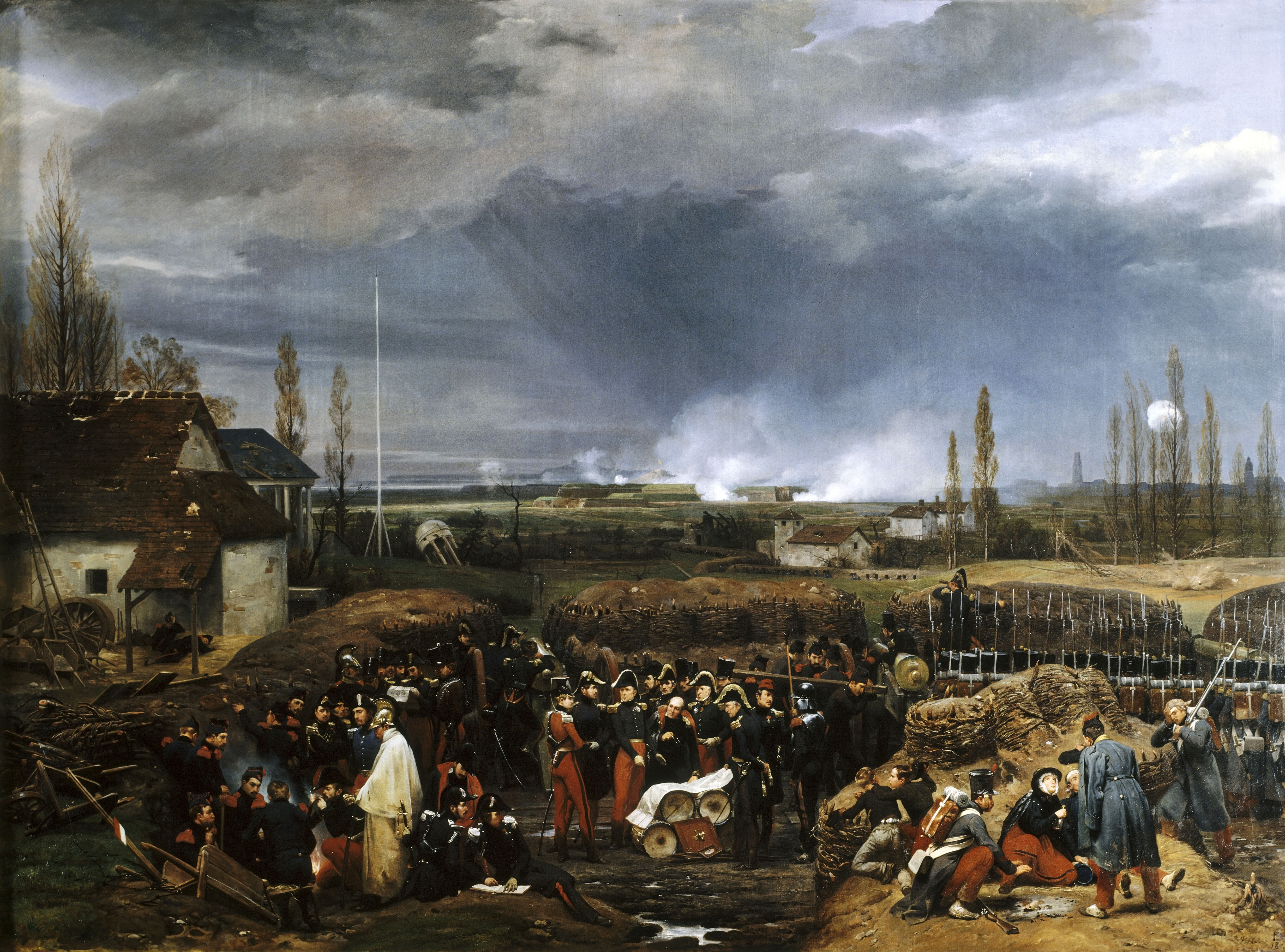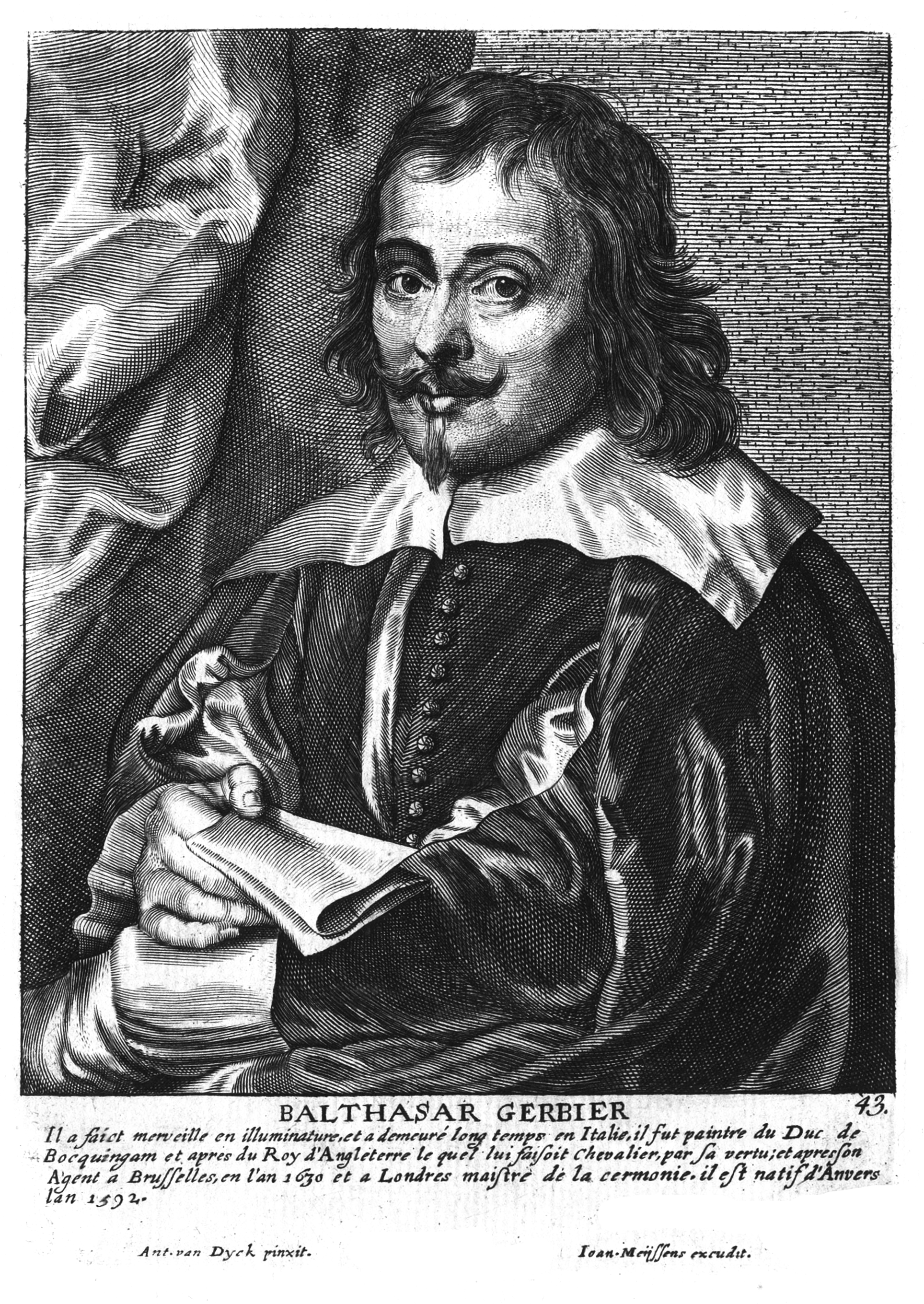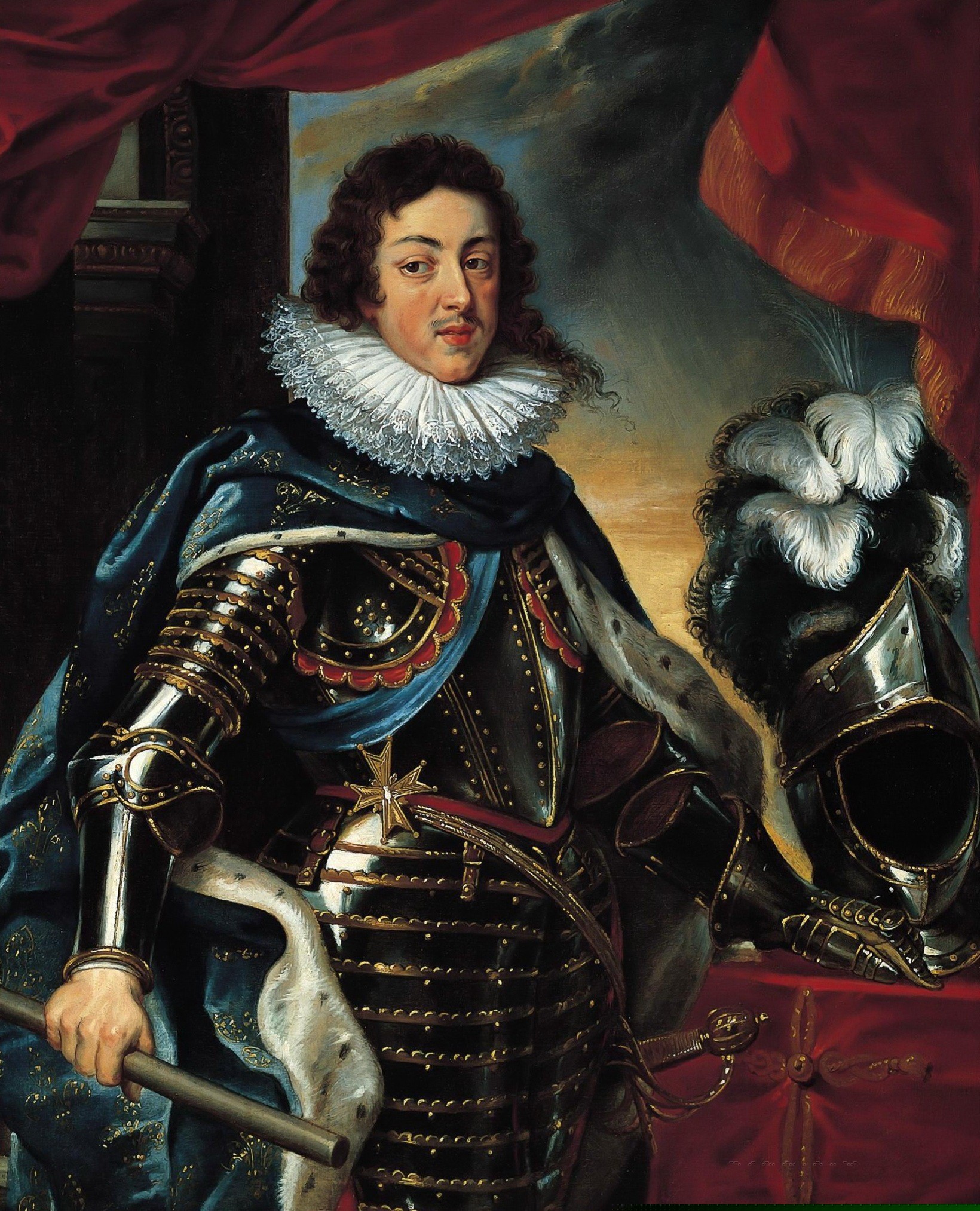|
Albert De Ligne, Prince Of Barbançon
Albert de Ligne (1600–1674), Prince of Barbançon and Arenberg, knight of the Golden Fleece, was a Netherlandish nobleman and military commander in the Thirty Years' War and the Eighty Years' War. Life Ligne was the son of Robert de Ligne, Baron of Barbançon (second son of Jean de Ligne, Duke of Arenberg), by Claude, Countess of Salm. His father was commander of the Albert VII, Archduke of Austria, Archduke Albert's honour guard and colonel of a cavalry regiment. Shortly before his death, in 1614, the lordship of Barbançon became a principality. On Albert's accession he was therefore Prince of Barbançon. In 1618 the young prince entered royal service under Charles Bonaventure de Longueval, Count of Bucquoy, for the campaign against the Bohemian Revolt that opened the Thirty Years' War. In 1620 he was commissioned as captain of a company of cuirassiers in Ambrogio Spinola's Palatinate campaign. In 1622 Isabella Clara Eugenia, governor general of the Spanish Netherlands, appoint ... [...More Info...] [...Related Items...] OR: [Wikipedia] [Google] [Baidu] |
Schelte A Bolswert
Schelte a Bolswert or Schelte Adamsz. Bolswert (c. 1586 – 1659) was a Frisian engraver who worked most of his career in Antwerp where he was one of the lead engravers in Rubens' workshop. He is known for his reproductive works after Peter Paul Rubens, Rubens and Anthony van Dyck.Schelte Adamsz. Bolswert at the Netherlands Institute for Art History Life He was born in the town of Bolsward, Bolswert in Friesland around 1586 as the son of Adam Uytema. Both he and his older brother, Boetius à Bolswert left in 1609 their hometown for Amsterdam where the older brother worked as an engraver for the print publisher Michiel Colyn. The younger brother studied printmaking with his brother and produced his first known work in 1612. By 1617 the brothers were active in Antwerp as employees of the Plantin Press. ...[...More Info...] [...Related Items...] OR: [Wikipedia] [Google] [Baidu] |
Biographie Nationale De Belgique
The ''Biographie nationale de Belgique'' (; ) is a biographical dictionary of Belgium. It was published by the Royal Academy of Belgium in 44 volumes between 1866 and 1986. A continuation series, entitled the ''Nouvelle Biographie Nationale'' (, ''New National Biography''), has been published by the Royal Academy of Science, Letters and Fine Arts of Belgium since 1988, with volume 16 appearing in 2023. Both the ''Biographie nationale'' and ''Nouvelle biographie nationale'' were digitised by the Fonds InBev-Baillet Latour and can be freely consulted on the Academy's website. A parallel biographical dictionary has been produced in Dutch since 1964, entitled ''Nationaal Biografisch Woordenboek'' (; ''National Biographical Dictionary''). It places more emphasis on figures important to the history and culture of the Flemish Region and is published by the Royal Flemish Academy of Belgium for Science and the Arts (with the co-operation of the Royal Academy of Dutch language and litera ... [...More Info...] [...Related Items...] OR: [Wikipedia] [Google] [Baidu] |
Jean Charles Joseph De Vegiano
Jean Charles Joseph de Vegiano (1724–1794), lord of Hovel, was a genealogist and heraldist of the nobility of the Low Countries and the County of Burgundy The Free County of Burgundy (; ) was a medieval and early modern feudal polity ruled by a count from 982 to 1678. It became known as Franche-Comté (the ''Free County''), and was located in the modern region of Franche-Comté. It belonged to th .... Works * ''Nobiliaire des Pays-Bas et du comté de Bourgogne'' (1760) * ''Supplément au Nobiliaire des Pays-Bas, et du comté de Bourgogne'' (1775) * ''Suite du Supplément au Nobiliaire des Pays-Bas et du comté de Bourgogne'' (1779) * ''Nobiliaire des Pays-Bas et du comté de Bourgogne'', 4 volumes in 7 parts, edited by J.S.F.J.L. de Herckenrode (1862–1868) [...More Info...] [...Related Items...] OR: [Wikipedia] [Google] [Baidu] |
Dave Castle
Dave Castle, also known as Fernan-Núñez Castle (, ''Château Fernan-Núñez'') is a château in the village of Dave, Wallonia, also known as Dave-sur-Meuse, now a part of the city of Namur, Belgium. The château stands on the banks of the Meuse. It was originally a medieval structure, the centre of power of the influential sieurs de Dave, but was ruined in the 17th century, and re-constructed in the 18th and 19th centuries by the Dukes of Fernan-Nuñez, whence the alternative name. See also *List of castles in Belgium A list is a set of discrete items of information collected and set forth in some format for utility, entertainment, or other purposes. A list may be memorialized in any number of ways, including existing only in the mind of the list-maker, but ... Castles in Belgium Castles in Namur (province) {{Belgium-castle-stub ... [...More Info...] [...Related Items...] OR: [Wikipedia] [Google] [Baidu] |
Ypres
Ypres ( ; ; ; ; ) is a Belgian city and municipality in the province of West Flanders. Though the Dutch name is the official one, the city's French name is most commonly used in English. The municipality comprises the city of Ypres/Ieper and the villages of Boezinge, Brielen, Dikkebus, Elverdinge, Hollebeke, Sint-Jan, Vlamertinge, Voormezele, Zillebeke, and Zuidschote. Together, they are home to about 34,900 inhabitants. During the First World War, Ypres (or "Wipers" as it was commonly known by the British troops) was the centre of the Battles of Ypres between German and Allied forces. History Origins Ypres is an ancient town, known to have been raided by the Romans in the first century BC. It is first mentioned by name in 1066 and is probably named after the river Ieperlee on the banks of which it was founded. During the Middle Ages, Ypres was a prosperous Flemish city with a population of 40,000 in 1200 AD, renowned for its linen trade with England, which w ... [...More Info...] [...Related Items...] OR: [Wikipedia] [Google] [Baidu] |
Francisco De Melo
Dom Francisco de Melo (1597 – 18 December 1651) was a Portuguese nobleman who served as a Spanish general during the Thirty Years' War. Biography Francisco was born in Estremoz, Portugal. From 1632 to 1636 he was the Spanish ambassador to the Republic of Genoa. In 1638, Francisco was appointed viceroy of Sicily, and two years later he was ambassador in Vienna. He was appointed as an understudy of Marquess of Leganés. Francisco was marquis of the Portuguese Tor de Laguna, count of Assumar, and from 1641 to 1644, interim governor of the Southern Netherlands. When Francisco arrived in the Southern Netherlands, he already had an impressive political career. He scored a victory against Antoine III de Gramont at the Battle of Honnecourt in May 1642. Francisco was defeated at the Battle of Rocroi in 1643. In August 1644, Francisco returned to Spain and was appointed to the council of state and royal military adviser by Philip IV of Spain Philip IV (, ; 8 April 160517 Se ... [...More Info...] [...Related Items...] OR: [Wikipedia] [Google] [Baidu] |
Rupelmonde
Rupelmonde is a village in the municipality of Kruibeke, in the Belgian province of East Flanders. It is located on the banks of the river Schelde opposite the confluence with the eponymous Rupel, and is known for its sundials as well as having what is probably Belgium's only tidemill. It is the birthplace of Gerardus Mercator, (1512–1594) the Flemish cartographer Cartography (; from , 'papyrus, sheet of paper, map'; and , 'write') is the study and practice of making and using maps. Combining science, aesthetics and technique, cartography builds on the premise that reality (or an imagined reality) can ..., who was imprisoned for several months in the castle there, a remnant of which today serves as a museum. The town holds a procession of civic giants on the first Sunday of August each year. Gallery [...More Info...] [...Related Items...] OR: [Wikipedia] [Google] [Baidu] |
Vilvoorde Castle
Vilvoorde (; ; ; historically known as ''Filford'' in English) is a municipality and city in the Halle-Vilvoorde district (''arrondissement'') of the province of Flemish Brabant, Belgium. The municipality comprises the city of Vilvoorde proper with its two outlying quarters of Koningslo and Houtem and the small town of Peutie. The official language of Vilvoorde is Dutch, as in the rest of Flanders. There is a French-speaking minority of about 33.7%, concentrated especially in the Koningslo and Beauval quarters, bordering the Neder-Over-Heembeek neighbourhood of Brussels. The French-speaking minority is represented by 3 members on the 33-seat local council. From 2000 until August 1, 2007, the mayor of Vilvoorde was former Belgian prime minister Jean-Luc Dehaene. The mayor since 2013 is Hans Bonte, also a member of the Federal House of Representatives. History Origins The Nervii, and later the Romans, probably already settled in this strategic place near the river Zenne. The ... [...More Info...] [...Related Items...] OR: [Wikipedia] [Google] [Baidu] |
Citadel Of Antwerp
Antwerp Citadel (, ) was a pentagonal bastion fort built to defend and dominate the city of Antwerp in the early stages of the Dutch Revolt. It has been described as "doubtlesse the most matchlesse piece of modern Fortification in the World" and as "one of the most studied urban installations of the sixteenth century". History The citadel was designed by the Italian engineer Francesco Paciotto and built on the orders of the Duke of Alva. Initial construction was completed in 1572. After the Sack of Antwerp (1576) the citizens partially demolished the fortification, but it was reconstructed after the Fall of Antwerp (1585). The citadel saw action towards the end of the Napoleonic Wars, when it was defended by determined Bonapartists. The Siege of Antwerp (1814) continued for a month after Napoleon's abdication. After the Belgian Revolution of 1830, Dutch forces remained in control of the citadel until the Siege of Antwerp (1832). Demolition began in 1874 and was completed in 18 ... [...More Info...] [...Related Items...] OR: [Wikipedia] [Google] [Baidu] |
Balthazar Gerbier
Sir Balthazar Gerbier (23 February 1592, in N.S. – 1663) was an Anglo-Dutch courtier, diplomat, art advisor, miniaturist and architectural designer, in his own words fluent in "several languages" with "a good hand in writing, skill in sciences as mathematics, architecture, drawing, painting, contriving of scenes, masques, shows and entertainments for great Princes... as likewise for making of engines useful in war." Biography Gerbier, the son of Anthony Gerbier,Colvin 1995. was born in Middelburg, Zeeland, of a Huguenot family that had settled there. Dutch sources show that his family were cloth merchants although he claimed that his grandfather had been a "Baron Douvilly" and so signed himself on occasion. As a designer of siege machinery he was recommended by Maurice of Nassau, later Prince of Orange, through whose efforts Gerbier arrived in London in 1616, in the train of the Dutch ambassador. In London he soon found a patron in George Villiers, 1st Duke of Buckingham for ... [...More Info...] [...Related Items...] OR: [Wikipedia] [Google] [Baidu] |
Conspiracy Of Nobles (1632)
The Conspiracy of Nobles (French: ''La conspiration des nobles'') was a plot in 1632 to divide the Spanish Netherlands between the Dutch Republic and the Kingdom of France. The Belgian aristocrats behind the plot were frustrated at their exclusion from the decision-making process by Gaspar de Guzmán, Count-Duke of Olivares, who was a chief minister to the Philip IV of Spain, sovereign ruler of the Spanish Netherlands. Among the conspirators were Counts Hendrik van den Bergh and René de Renesse, 1st Count of Warfusée, the only two of the conspirators to act. The plan came to nothing, but the existence of the conspiracy had a major impact on subsequent political developments, and the defection of Hendrik van den Bergh was a serious blow to the military leadership of the Army of Flanders and the prestige of the Habsburg dynasty. Only in 1634 did the Spanish government begin to gain a picture of the extent of the plot, through revelations made by Balthazar Gerbier, Charles I of Eng ... [...More Info...] [...Related Items...] OR: [Wikipedia] [Google] [Baidu] |
Cardinal Richelieu
Armand Jean du Plessis, 1st Duke of Richelieu (9 September 1585 – 4 December 1642), commonly known as Cardinal Richelieu, was a Catholic Church in France, French Catholic prelate and statesman who had an outsized influence in civil and religious affairs. He became known as the Red Eminence (), a term derived from the style of Eminence (style), Eminence applied to Cardinal (Catholic Church), cardinals and their customary red robes. Consecrated a bishop in 1607, Richelieu was appointed Secretary of State for Foreign Affairs (France), Foreign Secretary in 1616. He continued to rise through the hierarchy of both the Catholic Church and the French government, becoming a Cardinal (Catholic Church), cardinal in 1622 and Chief minister of France, chief minister to King Louis XIII, Louis XIII of France in 1624. He retained that office until his death in 1642, when he was succeeded by Cardinal Cardinal Mazarin, Jules Mazarin, whose career the cardinal had fostered. Richelieu became enga ... [...More Info...] [...Related Items...] OR: [Wikipedia] [Google] [Baidu] |




